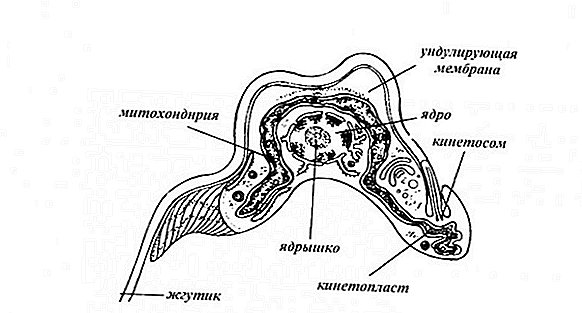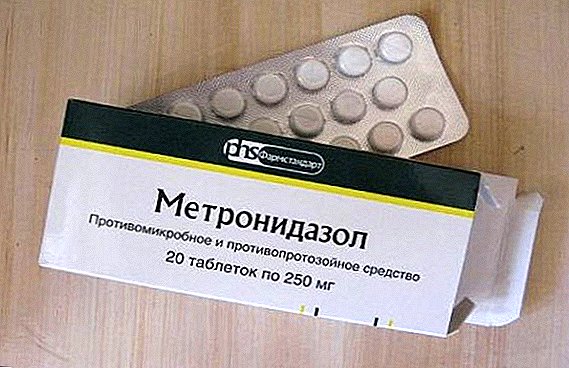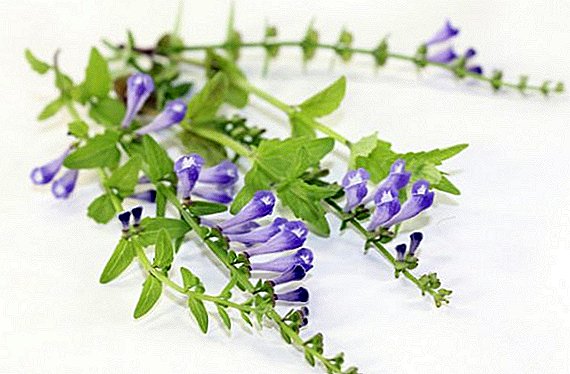 There are a number of diseases that are most pronounced only in horses. And one of these serious illnesses is trypanosomiasis, or a case of illness. It is chronic in nature and is capable of destroying a whole herd of animals in a short period. The article will look at information about the symptoms of this disease, the main pathogens and methods of treatment.
There are a number of diseases that are most pronounced only in horses. And one of these serious illnesses is trypanosomiasis, or a case of illness. It is chronic in nature and is capable of destroying a whole herd of animals in a short period. The article will look at information about the symptoms of this disease, the main pathogens and methods of treatment.
What is this disease
The incidental disease, also known as trypanosomiasis, or durina, is an invasive sickle-like disease caused by the simplest flagellated blood parasites, trypanosomes, which affect the mucous membranes of the genital organs, lymph nodes, vessels and blood capillaries. In addition, this disease can affect the nervous system of the animal.
Did you know? For the first time faced with this disease in ancient Greece. In more detail the disease was described by scientists at the end of the XVIII century. On the territory of the post-Soviet countries, the durin appeared in 1863, but only 60 years later it was possible to isolate the virus and study it. At the present time, cases of occurrence of the disease are extremely rare and occur only in areas with a low level of development of the veterinary sphere.
Pathogen, sources and routes of infection
The causative agent of this disease is a flagellated protozoan - trypanosome (Trypanosoma eguiperdum), which has an elongated buravoobraznogo form with pointed ends of 22-28h1,4-2,6 microns. The shell, located on the outside of the parasite, is presented in the form of a solid wall - pellicle, which protects it from the harmful effects of various factors. A pellicle consists of three layers, due to which the simplest makes contact with the outside world. The trypanosome moves by means of flagella, special organs that consist of contractile molecules called fibrils.

The causative agent of trypanosomiasis refers to nuclear parasites, in which the nucleus is located in the center of the cell surrounded by a membrane consisting of two layers. During their life cycle, trypanosomes carry out the simplest division, due to which they multiply.
It will be useful for you to learn all about the structure and diseases of the limbs in horses.
The causative agents of the illness are obligate parasites that are not able to function outside their host’s organism and in an open environment for a long period. As a rule, animals are infected during sexual intercourse or during artificial insemination with infected sperm.

Also, cases of transmission of trypanosomes to foals through the mother’s nipple are not excluded, rarely through handy equipment, household items and medical instruments, for example, a vaginal speculum mirror, urinary catheter, etc.
Important! The disease can affect the animal at any time of the year.In conditions of the natural environment, only equids, in particular, horses, donkeys, and mules are infected. Moreover, in the latter two cases, the ailment most often takes place for more than one year in a latent or chronic form, whereas in horses it is in a chronic or acute form.
Incubation period and symptoms
The period of incubation of this disease is from one to three months. At the same time, clinical symptoms develop in a specific sequence, which can be divided into three main periods:
- Genital lesions. At first, after infection, only the genitals of the animal undergo atypical changes. They become swollen, there is redness of mucous membranes and outflow of mucus from them. Subsequently, small nodules and ulcers form on the vagina, which quickly pass. At this time, you can see a false hunt for mares, frequent erections in stallions. The first period lasts about one month and is characterized by a satisfactory condition of the body of horses.
- Skin lesions. At the next stage of development of the ailment, problems with the skin are added to all the previously listed symptoms: a rash appears on the body, in the abdominal area, swelling in the form of rings appears on the sides, and skin sensitivity is increased. During this period, there is a deterioration in the appetite of animals, an increase in body temperature, the males rapidly lose weight, and the females abort.
- Paralysis and paresis of motor nerves. They are manifested in the form of curvature of the lips, sagging ears, paralysis of the penis. You can also observe the development of conjunctivitis, the defeat of the lower back, in which animals begin to squat when walking. Further paralysis of the limbs is manifested and death occurs. The full cycle of the disease can last more than one year.

Important! The acute course of the disease occurs most often in horses of elite breeds. As a rule, 30-50% of infected individuals die.
Diagnostics
Since the disease is chronic, it is possible to identify its symptoms at any time of the year. It is possible to diagnose ailment through various rapid tests, as well as laboratory tests.

The main methods of diagnosing durina are:
- microscopic analysis;
- clinical trials;
- serological diagnosis (RSK).
External signs, such as dramatic weight loss of the animal, edema, sudden asymmetry of the lips or nostrils, drooping of the eyelids or ears, weakness of the back, may indicate the occurrence of such a disease. In the presence of such symptoms should immediately seek medical help.
Did you know? Trypanosomes have the unique ability to protect against the victim’s immune system. When an animal enters the animal's body, its immune system detects the parasite, but at this time, the latter includes the genes responsible for the synthesis of glycoproteins. As a result of this synthesis, glycoproteins are replaced by others that the immune system cannot recognize. This gives trypanosome more time to reproduce.
Pathological changes
It should be noted that pathological changes for this disease are not typical, and it is impossible to diagnose the disease correctly according to the results of an autopsy of the animal. However, the corpses show a general depletion of the body, degenerative changes in the heart muscle, liver, enlarged inguinal lymph nodes, swelling of the genital organs, skin and mucous ulcers and nodules, degeneration of the muscles of the lower back and back.

As for the nervous system in the development of this disease, histologically, it has been studied very little.
Learn all about infectious anemia in horses.
Treatment
Unfortunately, treatment of trypanosomiasis is ineffective and in most cases is not carried out. Therapy is possible at the initial stages of development of the disease, but most often it occurs chronically, it is almost impossible to identify it at the early stages. Individuals that are in the group of patients or suspected to have the disease are subject to treatment.

First of all, carry out the weighing of the animal to determine its body weight. It is on these parameters will depend on the dose of medication required for therapy. Horses injected intravenously "Naganin", at 10% dilution in sodium chloride solution. Dosage - 0.01-0.015 mg per kilogram of body weight. After 30-40 days the injections are repeated.
Important! To avoid complications during treatment in the form of swelling of the lips, pain in the hooves, the day before it starts and within 7-10 days after it, the animal is driven to a light sweat several times a day.It is very important during therapy not to reduce the dose of the drug, because an insufficient dosage will not only have a positive effect, but also create resistance to “Naganin” in the pathogen. In the event of a relapse, a combination therapy is prescribed, which consists in the use of "Naganin" and "Novarsenol" in a dosage of 0.005 mg per one kilogram of body weight.

Animals that were treated should be under the supervision of a veterinarian for about one year. Such horses will be considered healthy only after a threefold examination by all popular methods for 10-12 months after therapy.
Prevention
To date, effective therapy to combat this disease has not been developed, therefore, prevention of the disease is considered the most reliable method, which includes the following measures:
- regular veterinary control of mares and stallions before the mating process. This inspection is based on the implementation of a serological examination of blood. In this case, the stallions undergo a similar survey three times a year;
- constant identification of infected individuals and their treatment;
- vaccination - stallions are vaccinated with "Naganin" during the breeding season, mares who collect sperm are given medication for prophylaxis every month;
- castration of stallions unsuitable for insemination;
- keeping stallions older than one year, as well as castrated individuals separate from mares;
- placement in quarantine for 30 days of all new animals, with simultaneous serological diagnostics;
- Slaughter of all individuals in a suspicious trypanosomosis test in one horse from the group.

A casual disease in horses, being a rarity in our country, can nevertheless develop rapidly on disadvantaged farms. It causes great damage to breeding farms and can cause the slaughter of the entire population. Crucial in the elimination of this disease is the timely identification of the pathogen and the implementation of competent and effective preventive measures.












